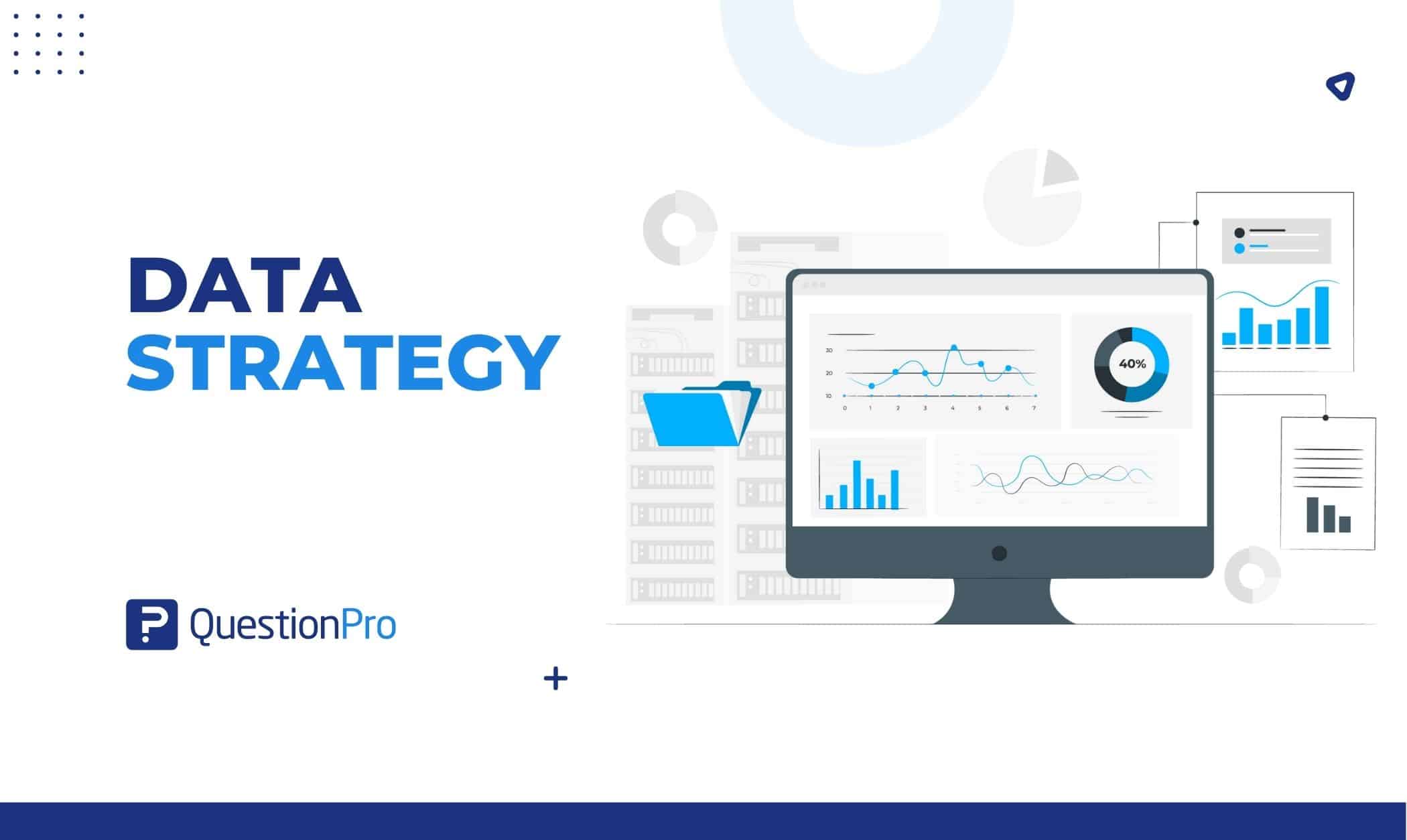
Data is an important resource for businesses in the modern world. The value of information is well-known, but unlocking it can be difficult due to the volume of data and the problems of gathering, organizing, and activating it. Creating a data strategy can help businesses deal with these problems and get the most out of their data and resources.
In this blog, we will discuss data strategy and explain 7 steps to help you build a perfect one that helps your business.
What is data strategy?
A data strategy is a foundation for all your data practices. It’s not a quick fix for your data problems, and it’s not just about data. It’s a long-term plan that outlines the people, processes, and technology you’ll need to solve your data problems and reach your business goals.
For business leaders to create a successful strategy, they need to look at the business through the lens of data deliberately and objectively and predict what needs to happen to reach the specific goals that the company has set. Leaders of businesses should think about the following:
- Employees need to be able to use the data in a better way and with more power.
- The processes must ensure that enterprise data is accessible and of high quality.
- The technology will store, share, and analyze the company’s data.
This strategy addresses how a company may use data to make business decisions and design a plan that integrates people, processes, and technology.
7 Effective Steps to Build A Data Strategy
Your company’s data goals and how you plan to use data will guide your strategy development at every step. Below are seven steps of this strategy. The seven steps are as follows:
- Determine Your Goals
Determination of your goal is the first step of your data strategy. Setting clear business goals is important because it helps you make a detailed plan and decide what kinds of data you need to focus on. Access to a lot of data can help you get a clear picture, but it can also be too much for your team.
For example, if you want to expand your business to target Canadian pen companies, it’s better only to collect the most important information. It would include the company’s total revenue, the number of companies in the niche, the market share of the top companies, etc.
- Get the Right Data
The second step is to get the right data collection. With so many data sources, it is important to research the right ones to give you enough information to make good decisions. It should include outside sources.
For example, social media can give you a lot of very helpful data.
- Make cross-department sharing easier
Each department in your organization will collect, create, store, and manage its datasets, which can be problematic when sharing the data with other departments. Before these data silos become a problem, the organization needs to be open.
For example, include everyone in emails and use internal platforms to share relevant data.
- Integrate Wherever Possible
Integration is the next step of your data strategy. You need to integrate data to keep your tools and systems working smoothly. It will make it easier to access and use it across all of your data stacks and let you use tools for automation.
- Set up a data-driven culture
Establishing a data-driven culture across the whole organization is crucial if you want to create a good strategy and make sure your team sticks to it and changes it as your needs change.
There are multiple ways to do this. First, giving your employees chances to grow professionally and learn new skills is important. It makes them feel comfortable using new systems to stay current. It’s also important to follow specialty trends and consult professional groups to identify what technologies to adopt and where to acquire top data expertise.
Finally, if you want your organization to perceive data as an advantage, show how you use data in your workday and make data-driven decisions. It will give your team more confidence in their data-driven tasks and make them feel comfortable working independently.
- Protect Your Data
Protecting data is the next step in building a data strategy. It reduces your risk of cyberattacks and assures compliance with data laws and regulations, such as GDPR. It is very important to have the right tools and systems in place to protect your data and the data of your customers.
As new rules emerge, it’s important to stay up to date, so your employee strategy should be flexible enough to adapt.
- Keep Testing
In the final step, It is important to test your strategy frequently to see what’s working and what’s not. The overall goal is to be able to quickly and effectively gather useful data that will assist you to keep coming to correct conclusions. It will help you keep it as effective and successful as possible.
Data Strategy Example
Businesses can benefit from data strategy. Data strategy is the set of tools, processes, and rules that define how to manage, analyze, and act on business data. Let’s take the example of a sales team.
The Scenario
A company’s sales department may have expressed concern about the amount of fragmented data it has on its customers. By combining data profiles and providing information such as previous product sales, the sales team may increase profits by being better positioned to close sales.
Data strategy resolution
This strategy will combine customer profiles and give the sales department a single source of information about customers and products.
Data strategy provides
Using this strategy, the sales team can see the customer’s current status and product profitability numbers. Blending data from a Customer Relationship Management platform (CRM) with operational, historical, customer, and product profitability data will lead to stronger and more profitable customer relationships.
The Overall Value to the Organisation
This strategy increases customer satisfaction and overall profitability, which grew the business’s sales.
Conclusion
Data strategy is the cornerstone for all your data and analytics demands, especially as your organization matures analytically. It is a long-term plan that considers people, processes, and technology.
As you develop your strategy, remember the seven key steps defined in this blog. A good strategy of data will help you better use your resources and get the most out of your data.
If you need any help with your data strategy, contact QuestionPro. QuestionPro is a survey software that helps to manage your data and gives real-time feedback.
QuestionPro experts team is always ready to help you! Fill out the form to get in touch with us. You can also sign up for a free demo right now.







